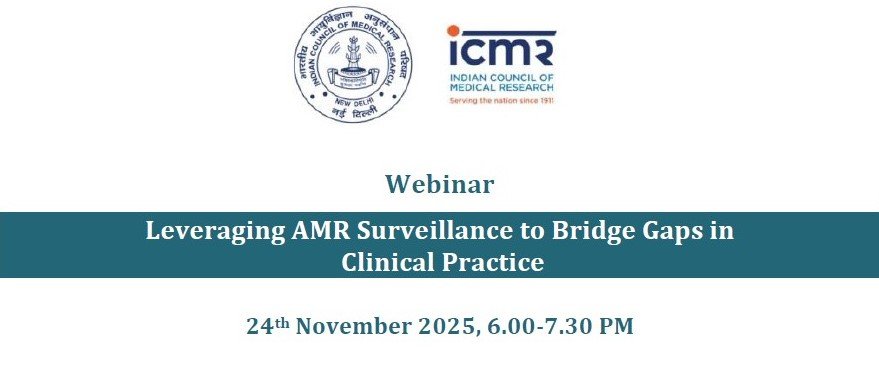Disclaimer: This post is for academic purposes only. Please read the original document if you intend to use them for clinical purposes.
This document summarizes the 2024 WHO report on prevention and control of AMR in the Eastern Mediterranean Region. The report highlights that AMR is a significant public health threat in the region, contributing to a substantial number of deaths, especially among children. It points to high rates of antibiotic consumption, variations in National Action Plan (NAP) implementation, and the need for stronger surveillance and stewardship programs, particularly in fragile and conflict-affected areas. The report emphasizes the need for a “One Health” approach, integrating human, animal, and environmental health sectors, and calls for a people-centered collaborative approach to address AMR effectively, tailoring interventions to diverse country contexts.
Themes:
1. The Scale of the AMR Problem:
AMR is a major public health crisis in the Eastern Mediterranean Region, responsible for 96,416 deaths in 2021, which is 16.6% of all deaths from bacterial sepsis in the region. Children under 5 are disproportionately affected, accounting for 30.56% of AMR-related deaths. Fragile, Conflict-affected and Vulnerable (FCV) countries have a higher proportion of deaths in under 5 year age (e.g., Somalia 52%). Specific resistant organisms (e.g., MRSA, i.e. Methicillin-resistant Staphylococcus aureus, Carbapenem-resistant Streptococcus pneumoniae, carbapenem-resistant Acinetobacter baumanii) are major causes of mortality.
2. High Antibiotic Consumption:
The Eastern Mediterranean Region has higher per capita antibiotic consumption rates than the global average. In 2018, the region had 21.8 defined daily doses per 1000 inhabitants per day (DID) compared to the global average of 16.2 DID. Middle-income countries (MICs) have seen the largest increase in antibiotic consumption between 2000 and 2018. The proportion of Access group antibiotics used is often lower than recommended. A point prevalence survey in 7 countries in 2019 found that only 34% of prescribed antibiotics were Access group antibiotics.
3. Progress and Gaps in NAPs:
All countries/territories in the region have developed a first NAP for AMR. But many NAPs are nearing expiry and in need of updates; few have been formally funded or implemented. As of December 2024, only Jordan, Qatar, and Saudi Arabia had endorsed updated NAPs. A lack of funding, human resources and technical capacity, as well as the challenges of coordinating and scaling up action across fragmented health sectors, are among the key challenges in turning plans into action.
4. Surveillance Challenges:
While all 22 countries/territories are enrolled in the Global AMR Surveillance System (GLASS), data collection and quality vary. 17 countries reported data in 2024 (for the year 2023). The total number of isolates reported to the system increased six-fold between 2017 and 2022, but the proportion of blood isolates is relatively very low. Most data come from public sector facilities; private sector engagement is growing. “Three pathogens account for three quarters of all the reported pathogens – Escherichia coli (26%), Klebsiella pneumoniae (23%), and Staphylococcus aureus (22%).” Surveillance systems need improvement to ensure representative, good-quality data. National monitoring systems for antimicrobial consumption and use also require strengthening. Most countries lack robust, granular data to inform stewardship programs.
5. Infection Prevention and Control (IPC):
IPC showed significant progress due to the COVID-19 pandemic with most countries in the region having a functioning national IPC programme. In 2024, there were 19 countries/territories in the Eastern Mediterranean Region that had a functioning IPC programme and IPC guidelines and 13 that had adopted multi-model intervention strategies for implementing IPC. There is still work needed to standardize training and increase capacity for IPC professionals. Basic sanitation services are lacking in many facilities.
6. Antimicrobial Stewardship:
Stewardship activities are better implemented in High-Income Countries (HICs), and are lacking in primary care in most countries. Antimicrobial stewardship activities are better implemented in HICs, where national guidelines for antibiotic use exist, mostly in the hospital sector. Stewardship in primary care is neglected in most countries/territories, even though most antibiotic use happens in primary care. Only a few MICs have developed policies for antibiotic use and these are often not enforced. Stewardship programs using training and regular audit and feedback need to be expanded across the region.
7. One Health Approach:
Most NAPs were developed in collaboration with animal and agriculture sectors, reflecting the One Health approach. However, most countries/territories’ multi-sectoral coordination mechanisms on AMR are not meeting regularly, and their technical working groups have no clear terms of reference, funding or accountability/ reporting mechanisms. There are logistic hurdles. The report highlights sensitivities around the economic impact of antibiotic use in the animal sector.
8. FCV States:
FCV states are particularly vulnerable due to dysfunctional health systems, disrupted supply chains, and poor access to Water, Sanitation and Hygiene (WASH). For FCV states, the emphasis needs to be on the basics of prevention – WASH, immunization and IPC – in combination with ensuring access to quality assured antibiotics and measures to encourage their appropriate use.” Weak enforcement of antibiotic sales regulations exacerbates the issue.
9. Public Awareness and Education:
Most countries conduct annual public awareness campaigns during World AMR Awareness Week. Of the 21 countries/territories who responded to the Tracking AMR Country Self-assessment Survey (TrACSS) 2024, only six countries reported having a nationwide, government-supported campaign targeting majority stakeholders, using targeted messaging. AMR training and awareness need to be expanded.
10. Vaccination and WASH:
Suboptimal rates of pneumococcal vaccination exist in several countries of the region. Many countries are yet to introduce the pneumococcal vaccine into their national programme. “The proportion of the population using safely managed sanitation services was 54.9% in 2022” and varied widely between countries. There is inadequate access to WASH services in health care facilities.
Key Recommendations and Way Forward:
1. Tailored Approaches:
Recognize the profound differences in health systems across the Region and tailor interventions accordingly, focusing on scaling up action in HICs, appropriate antibiotic use in MICs, and basics of prevention in FCVs. HICs need to scale-up actions across the public and private sectors and throughout the health and food production systems. In MICs, the focus should be on appropriate antibiotic use through stewardship programmes supported by behavioural and social science research and better use of antibiotic consumption data.”
2. Strengthen NAPs:
Update NAPs with measurable targets based on the political declaration at the UN General Assembly, and embed them in national health plans with adequate funding. Build on IPC gains and ensure they are sustained and built upon. At the 77th World Health Assembly, WHO Member States adopted the first global strategy, action plan and monitoring framework on IPC, and established an accountability mechanism to track progress towards agreed targets up to 2030.
3. Improve Surveillance:
Enhance data collection systems, focus on the quality and representativeness of data, and use the data to drive local and national action.
4. Promote Stewardship:
Focus on improving access to and use of Access antibiotics, while also reducing overall consumption of antibiotics in all settings through improved stewardship programs and behaviour change. The risk of emergence of resistance to antibiotics needs to be addressed with proper stewardship throughout their value chain. Primary health care and emergency programmes should incorporate infection prevention and the appropriate use of antibiotics.
5. Address Social Determinants:
Address the social and structural determinants of AMR and incorporate gender and equity dimensions into NAPs.
6. Implement a One Health Response:
Fully operationalize multi-sectoral coordination mechanisms, engage all relevant sectors, and ensure regular coordination. A One Health response – with a focus on preventing infection, reducing the inappropriate use of antibiotics and generating enough data to understand and manage the problem across sectors – is therefore needed.
7. Ensure Workforce Capacity:
Ensure appropriate staffing levels, skill mix and training to support antibiotic stewardship throughout the value chain.
8. Address supply chain issues to improve access to essential antibiotics.
Conclusion:
The report highlights that AMR is a major and complex challenge in the Eastern Mediterranean Region and beyond. Effective solutions require coordinated efforts across various sectors, data-driven decisions, and a shift in the focus from bugs and drugs towards a people-centered approach emphasizing better infection prevention, appropriate antibiotic use, and robust systems for diagnosis and management. The COVID-19 pandemic brought significant progress to infection control in many countries, and this momentum needs to be sustained and built upon to combat AMR more effectively.
Citation: Prevention and control of antimicrobial resistance in the Eastern Mediterranean Region: a progress report, 2024. Cairo: WHO Regional Office for the Eastern Mediterranean; 2024. Licence: CC BYNC-SA 3.0 IGO.









